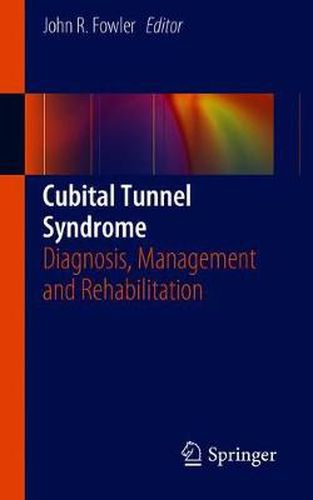Readings Newsletter
Become a Readings Member to make your shopping experience even easier.
Sign in or sign up for free!
You’re not far away from qualifying for FREE standard shipping within Australia
You’ve qualified for FREE standard shipping within Australia
The cart is loading…






Cubital tunnel syndrome is the second most common compression neuropathy in the upper extremity. While the treatment of carpal tunnel syndrome is relatively straightforward, there is much debate regarding the most efficient diagnostic methods, appropriate non-surgical management, and surgical management of cubital tunnel syndrome. This unique book is sensibly divided into three thematic sections. Part one reviews the relevant anatomy and presents the physical exam and diagnostic test modalities, along with non-surgical treatment strategies such as splinting and injections as well as the role of physical therapy. Surgical treatment strategies are discussed in detail in part two, including decompression, anterior transposition, minimal medial epicondyectomy and ulnar motor nerve transfer. Management of the failed release is highlighted here as well. Part three describes outcomes, acute and chronic complications and rehabilitation. Case material will be included where appropriate to provide real-world illustration of the presentations and procedures discussed. Practical yet comprehensive, Cubital Tunnel Syndrome will be an excellent resource for orthopedic, hand and plastic surgeons, trainees and residents, with content that will also be useful for physical therapists and rehabilitation specialists.
$9.00 standard shipping within Australia
FREE standard shipping within Australia for orders over $100.00
Express & International shipping calculated at checkout
Cubital tunnel syndrome is the second most common compression neuropathy in the upper extremity. While the treatment of carpal tunnel syndrome is relatively straightforward, there is much debate regarding the most efficient diagnostic methods, appropriate non-surgical management, and surgical management of cubital tunnel syndrome. This unique book is sensibly divided into three thematic sections. Part one reviews the relevant anatomy and presents the physical exam and diagnostic test modalities, along with non-surgical treatment strategies such as splinting and injections as well as the role of physical therapy. Surgical treatment strategies are discussed in detail in part two, including decompression, anterior transposition, minimal medial epicondyectomy and ulnar motor nerve transfer. Management of the failed release is highlighted here as well. Part three describes outcomes, acute and chronic complications and rehabilitation. Case material will be included where appropriate to provide real-world illustration of the presentations and procedures discussed. Practical yet comprehensive, Cubital Tunnel Syndrome will be an excellent resource for orthopedic, hand and plastic surgeons, trainees and residents, with content that will also be useful for physical therapists and rehabilitation specialists.